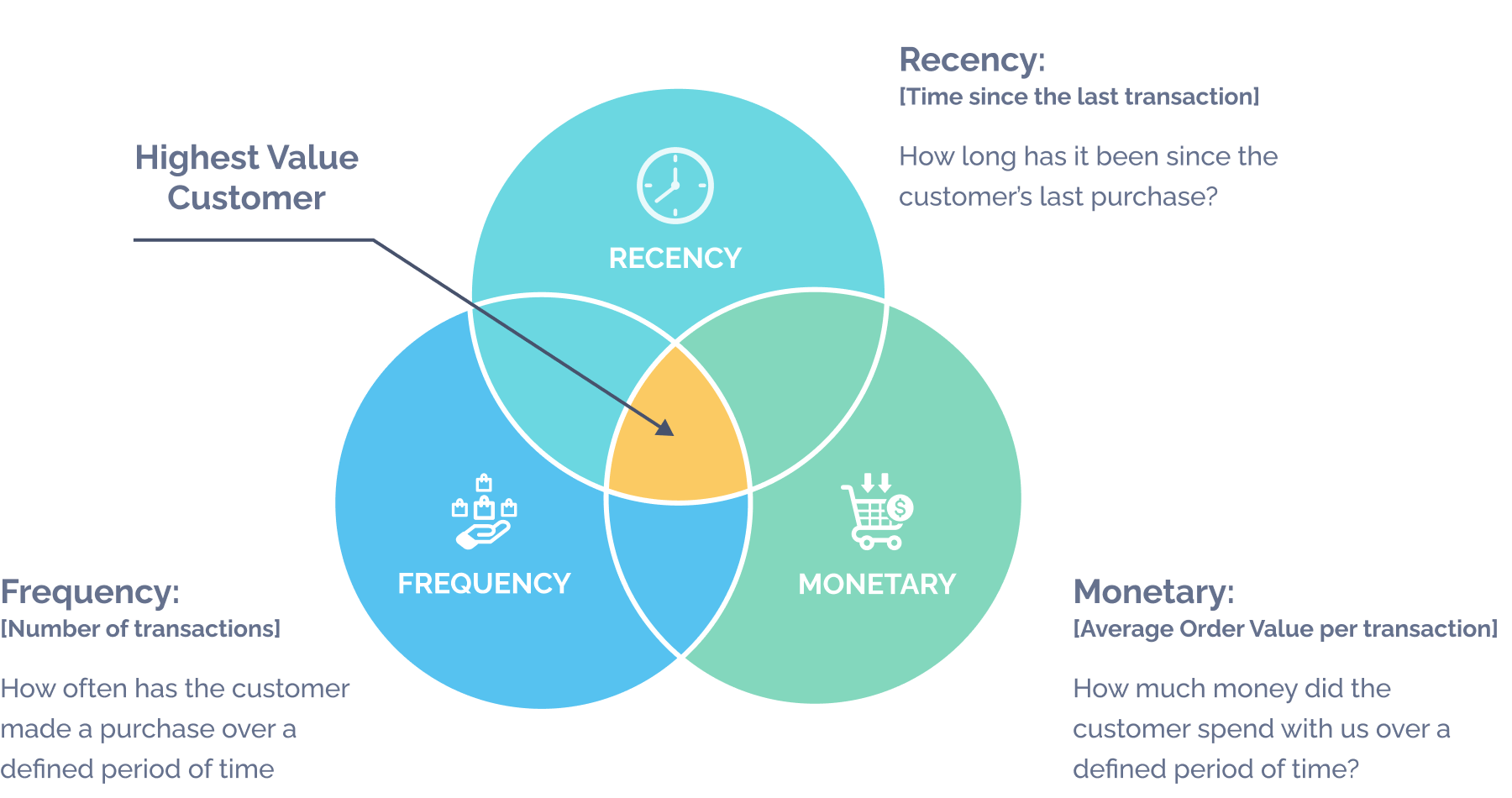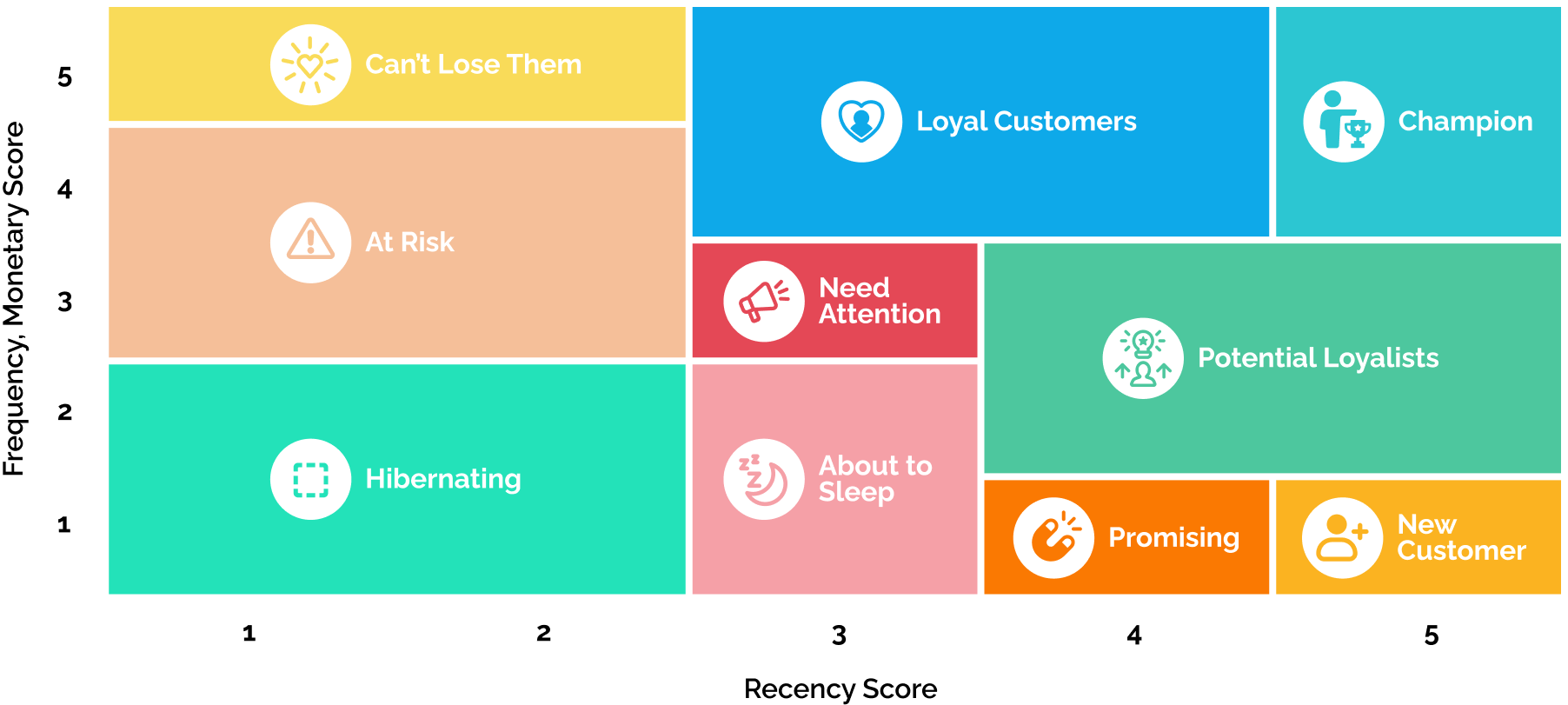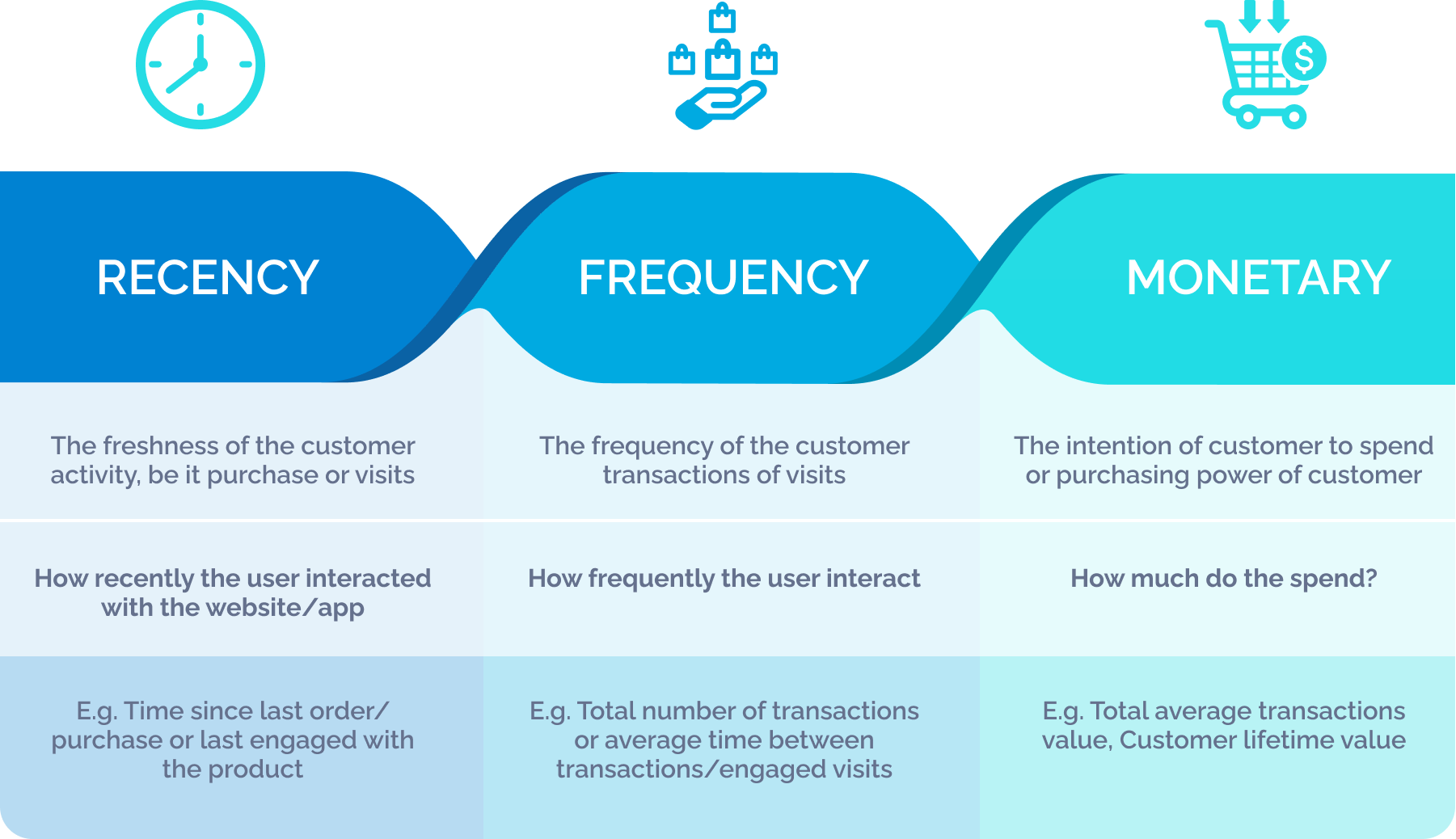RFM Analysis is a powerful marketing tool that segments customers based on their transaction history. By understanding these segments, businesses can tailor their referral and loyalty programs effectively, ensuring they resonate with the right audience.
Understanding RFM Analysis
Behavioral segmentation through RFM analysis allows businesses to categorize customers based on their purchasing habits, enabling more targeted and effective marketing strategies.
By understanding who your most valuable customers are, you can tailor your referral and loyalty programs to meet their specific needs, driving higher engagement and retention.
RFM Analysis segments customers based on three criteria:
- 1. Recency: How recently a customer has made a purchase.
- 2. Frequency: How often a customer makes a purchase.
- 3. Monetary Value: How much money a customer spends on purchases.

Each customer is assigned a score for each criterion, often on a scale of 1-5. A customer who recently made many high-value purchases would score high in all three areas, indicating a high-value customer for the business.

Recent studies indicate that customers with high RFM scores are more likely to respond positively to marketing campaigns. A 2020 report published on ResearchGate found that targeted campaigns based on customer segmentation, like RFM, could yield up to a 77% increase in ROI.
How to Use RFM Segmentation for Tailoring Referral and Loyalty Programs
With RFM segmentation, referral and loyalty programs can be more effectively tailored:
For ‘Champion’ Customers (high RFM score): Offer exclusive referral benefits or loyalty rewards, as they are more likely to refer new customers and make repeat purchases.
For ‘At Risk’ Customers (low RFM score): Implement re-engagement strategies like special offers or feedback requests to increase their engagement and spending.
Starbucks’ loyalty program is a prime example of using customer data effectively. They offer personalized rewards based on customer purchase history, significantly increasing customer retention and spending.

Implementing RFM Analysis in Your Business
To implement RFM Analysis, businesses first need to collect and organize their customer transaction data. This data is then used to assign RFM scores to each customer.
- Collecting Data: The first step is gathering detailed transaction data, including the date of purchase, frequency of transactions, and the amount spent.
- Calculating RFM Scores: Customers are scored for each RFM criterion. For instance, you might score Recency based on days since last purchase, Frequency on the number of purchases in a certain period, and Monetary on total spend.
- Segmenting Customers: Once scores are assigned, customers are segmented into groups based on their RFM score combinations. For example, customers with high scores in all three areas might be considered ‘Champions,’ while those with low scores across the board might be ‘At Risk.’
A practical example is Amazon’s recommendation system, which uses similar segmentation techniques to personalize shopping experiences, resulting in increased customer engagement and sales.

Challenges and Solutions in RFM Implementation
Implementing RFM Analysis effectively presents several challenges, each requiring specific solutions to ensure success:
Challenge: Data Collection and Quality
Solution: Implement robust data collection processes. Ensure that all customer interactions across various channels are tracked. Utilize reliable CRM systems that can integrate data from different sources. Regularly clean and update the database to maintain data quality.
Challenge: Skillset for Analysis
Solution: Invest in training your marketing and analytics teams in RFM analysis techniques. Alternatively, hire or collaborate with data analysts who specialize in customer segmentation. Utilizing online courses and workshops can also be beneficial.
Challenge: Creating Actionable Segments
Solution: Once RFM scores are calculated, the real challenge lies in interpreting these scores to create actionable customer segments. Conduct thorough market research to understand the behaviors and preferences of each segment. Develop clear strategies for engaging with each segment, such as personalized marketing for high-value customers or re-engagement campaigns for dormant ones.
Challenge: Integration with Marketing Strategies
Solution: RFM analysis should not exist in a vacuum. Integrate its findings into your broader marketing strategies. For instance, use insights from RFM analysis to guide email marketing campaigns, personalize website content, or create targeted ads.
Challenge: Evolving Customer Behavior
Solution: Customer behavior is not static; it evolves over time. Regularly update and repeat RFM analysis to reflect current customer behaviors. This ensures that your strategies remain relevant and effective.
Challenge: Balancing Personalization and Privacy
Solution: In an era where data privacy is paramount, ensure that your customer segmentation strategies balance personalization with privacy. Be transparent about data collection and use, comply with data protection regulations, and use data ethically to build trust with your customers.
Challenge: Measuring the Effectiveness of RFM Segmentation
Solution: Implement metrics and KPIs to track the effectiveness of strategies derived from RFM segmentation. Monitor changes in customer engagement, conversion rates, and overall revenue. Use these metrics to continuously refine your RFM model and strategies.
RFM Analysis is a powerful tool for segmenting customers for targeted referral and loyalty programs. By understanding the value and behavior of different customer segments, businesses can tailor their strategies for maximum effectiveness.
Unlock growth with referrals—request your free demo today and see the impact firsthand!
